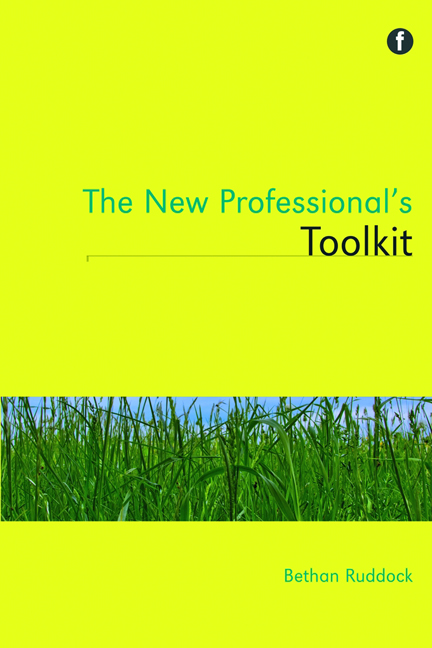Book contents
- Frontmatter
- Dedication
- Contents
- Preface
- Acknowledgements
- Glossary
- Introduction
- 1 Project management
- 2 Teaching, training and communicating
- 3 Meeting your users' needs and measuring success
- 4 Marketing your service and engaging stakeholders
- 5 Using technologies
- 6 Getting and staying online
- 7 Generating funding and doing more with less
- 8 Managing money, budgets and negotiating
- 9 Information ethics and copyright
- 10 Upskilling and professional development
- 11 Networking and promoting yourself
- 12 Professional involvement and career development
- Conclusion
- Appendix: Budgeting example spreadsheet
- Index
- Frontmatter
- Dedication
- Contents
- Preface
- Acknowledgements
- Glossary
- Introduction
- 1 Project management
- 2 Teaching, training and communicating
- 3 Meeting your users' needs and measuring success
- 4 Marketing your service and engaging stakeholders
- 5 Using technologies
- 6 Getting and staying online
- 7 Generating funding and doing more with less
- 8 Managing money, budgets and negotiating
- 9 Information ethics and copyright
- 10 Upskilling and professional development
- 11 Networking and promoting yourself
- 12 Professional involvement and career development
- Conclusion
- Appendix: Budgeting example spreadsheet
- Index
Summary
Introduction
Information professionals and technology have been linked for a long time. While it may be tempting to think that the association began with the move towards computer-cataloguing in the late 1960s, Murley (2009) mentions that one of ‘the featured programs at the 1938 AALL [American Association of Law Libraries] Annual Meeting was “The Use of Microfilm in a Law Library”’, and that microfilms and microfiches were still being discussed well into the 1970s.
Nearly 40 years of talking about a single technology may seem to show libraries as being slow-moving adopters. While this may be true for some, others have been at the forefront of implementing new technologies: Berners- Lee mentions how librarian Louise Addis at the Stanford Linear Accelerator encouraged the establishment of the ‘first web server outside CERN’ (2000, 50). There is a digital divide with our very profession: at the time when many information professionals are taking a leading part in driving new technologies, many libraries and archives still have records on paper, or locked into proprietary software.
Why this dichotomy? Although stereotypes would have you believe that information professionals are either computer-fearing luddites who would write with quills if modern feathers weren't so shoddy, or devoted technophiles who would sooner lose an arm than their smartphone, the reality is much less clear-cut. Much of the disparity comes down to resources, human as well as technical. To implement a new technology in an information environment, you need staff who can appreciate possible uses and learn how to use it, know enough to teach others to use it, and can install and maintain it. You also need a management and a user base of people who are prepared to accept change, and enough time and money to fund the project.
You can be as enthusiastic as you like, but if your organization is tied into Internet Explorer 6, or can't afford to replace its obsolete computers, you are unlikely to be able to implement whizzy technical solutions.
The move towards automation
A major technological change in libraries was the move to cataloguing on computers.
- Type
- Chapter
- Information
- The New Professional's Toolkit , pp. 73 - 92Publisher: FacetPrint publication year: 2012



